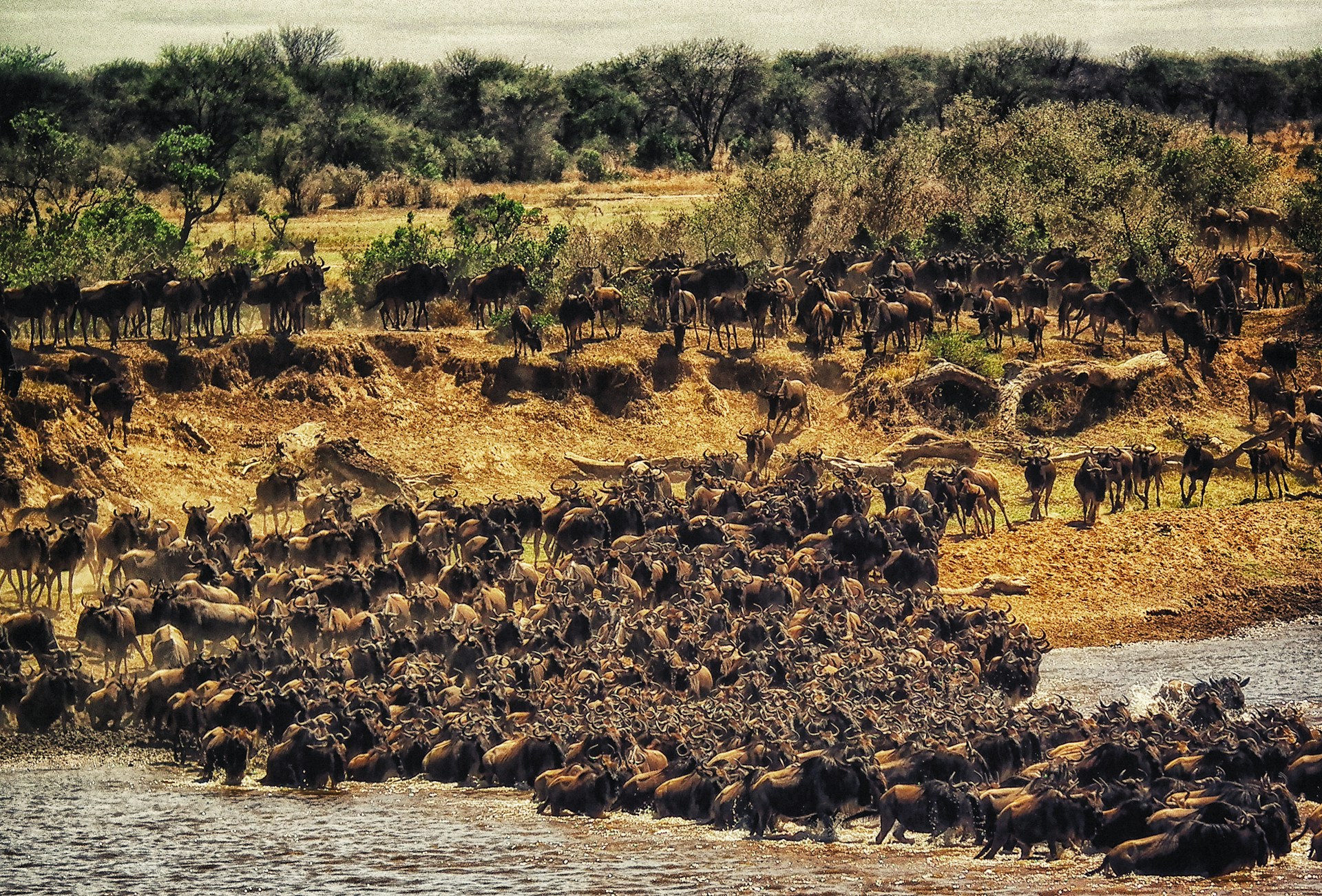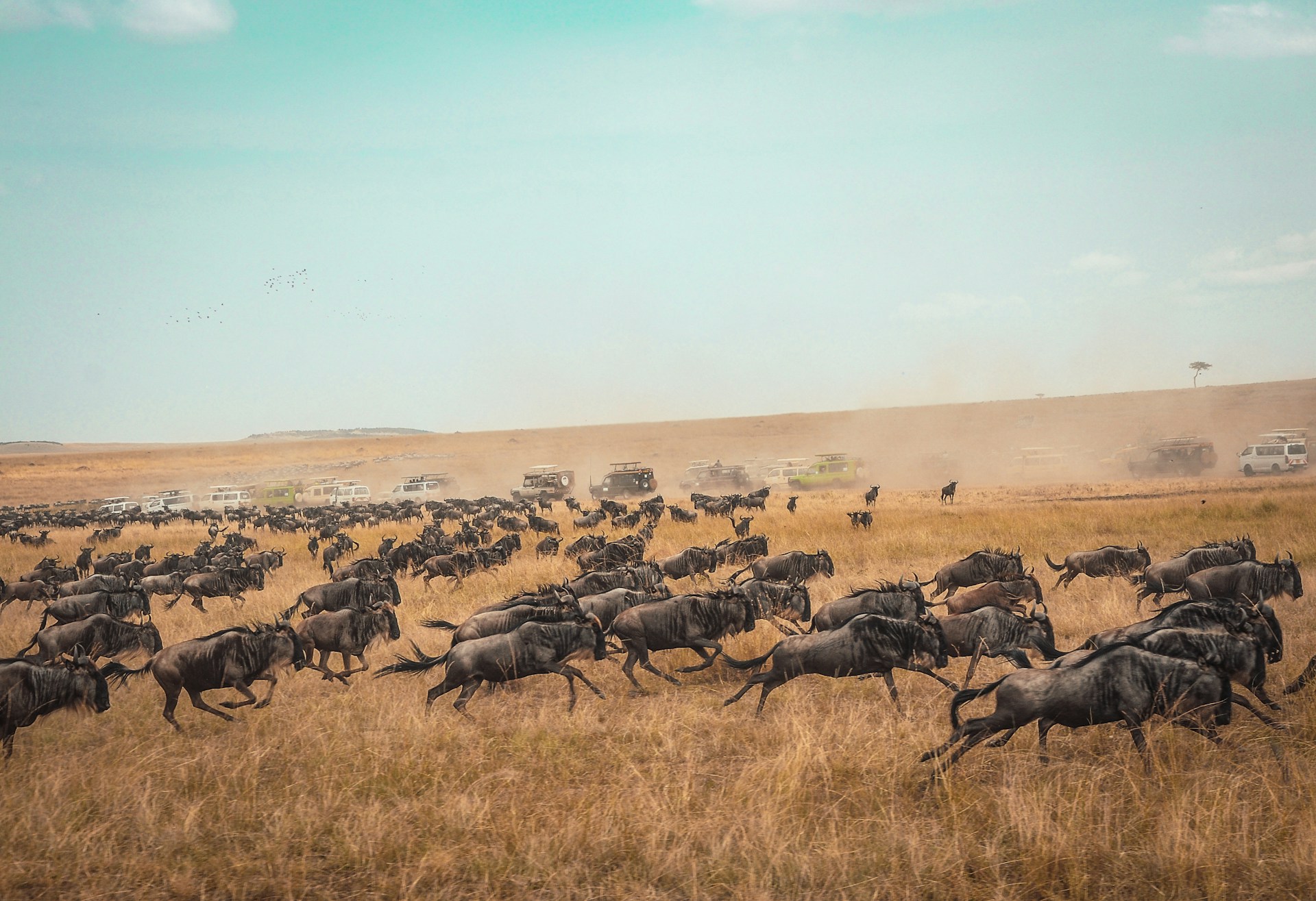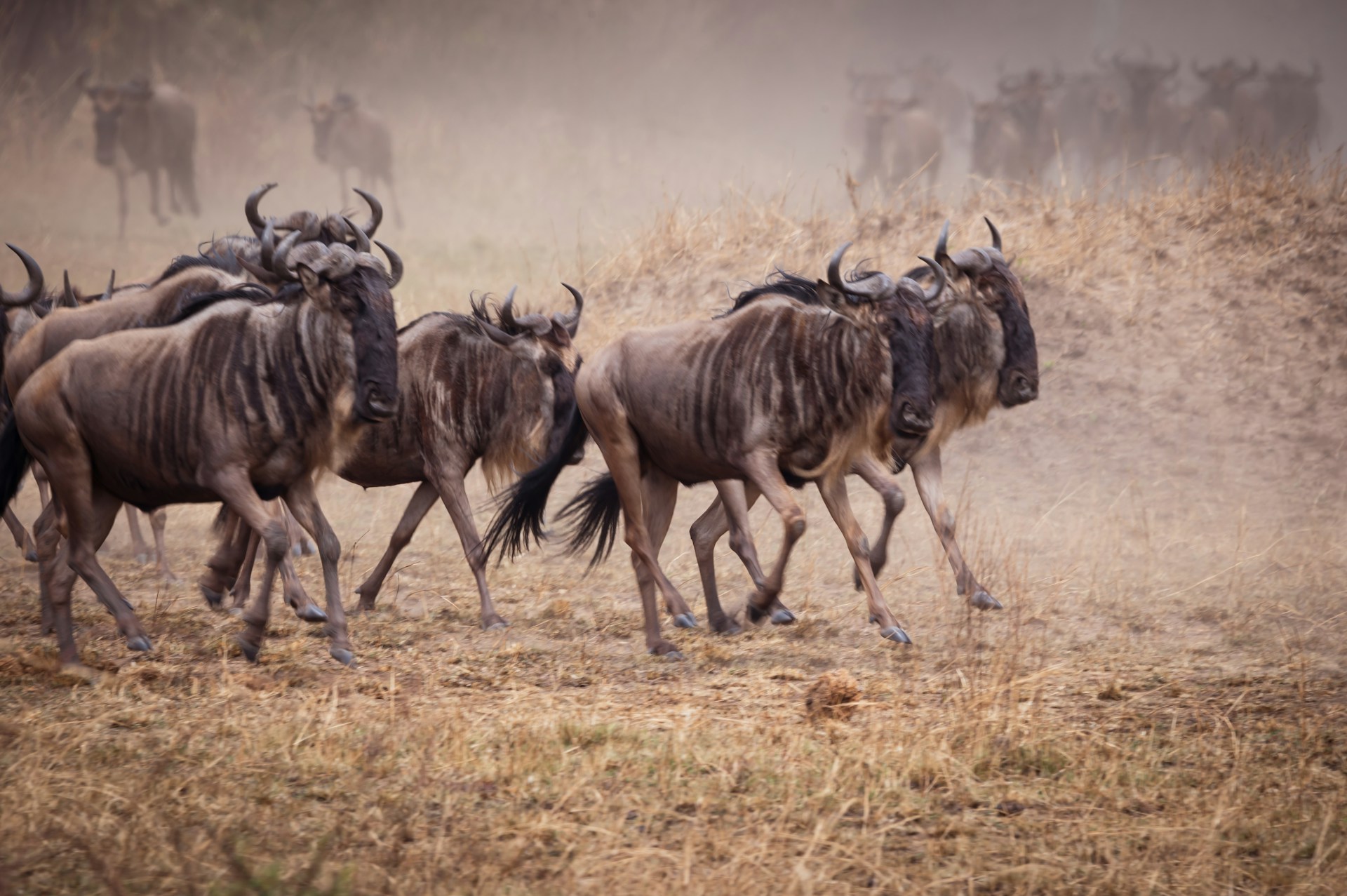The wildebeest migration in the Serengeti is one of nature’s most awe-inspiring spectacles, captivating wildlife enthusiasts and photographers alike. Every year, over two million wildebeests, along with hundreds of thousands of zebras and gazelles, embark on a journey that spans roughly 1,800 miles across the Serengeti ecosystem and into Kenya’s Maasai Mara.
The migration is driven by the search for greener pastures and water, following the seasonal rains in a cyclical pattern. It typically begins in the southern Serengeti around December and January, where the wildebeests give birth to their young in synchronized calving seasons. As the dry season progresses, usually around June and July, the herds start moving northwards towards the Grumeti River, braving crocodile-infested waters in a dramatic display of survival.



The Mara River crossing, often considered the climax of the migration, occurs between July and October. Here, the wildebeests face another perilous obstacle as they plunge into the river’s currents, dodging hungry crocodiles and navigating steep banks. This mass movement not only replenishes the grazing lands but also provides a vital source of food for predators like lions and hyenas, creating a dynamic ecosystem where life and death unfold in dramatic fashion.
The migration not only showcases the resilience and adaptability of these animals but also underscores the interconnectedness of ecosystems across borders. Conservation efforts play a crucial role in preserving this natural wonder, ensuring that future generations can witness and appreciate the unparalleled spectacle of the Serengeti wildebeest migration.

